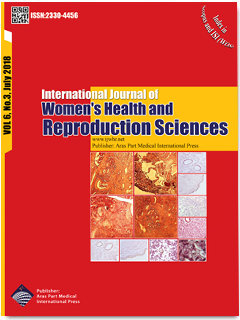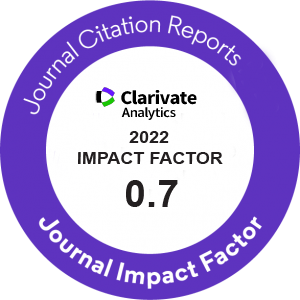| Review | |
| Prevalence of Low Birth Weight in Iranian Newborns: A Systematic Review and Meta-analysis | |
| Nasibeh Sharifi1, Mahrokh Dolatian2, Azita Fathnezhad3, Reza Pakzad4, Zohreh Mahmoodi5, Fatemeh Mohammadi Nasrabadi6 | |
| 1Student Research Committee, School of Nursing and Midwifery, Shahid Beheshti University of Medical Sciences, Tehran, Iran 2Department of Midwifery & Reproductive Health, School of Nursing & Midwifery, Shahid Beheshti University of Medical Sciences, Tehran, Iran 3School of Nursing and Midwifery, Shahid Beheshti University of Medical Sciences, Tehran, Iran 4Noor Research Center for Ophthalmic Epidemiology, Noor Eye Hospital, Tehran, Iran 5Non-communicable Disease Research Center, Alborz University of Medical Sciences, Karaj, Iran 6Department of Nutrition Sciences, School of Nutrition Sciences and Food Technology, Shahid Beheshti University of Medical Sciences, Tehran, Iran |
|
|
IJWHR 2018; 6: 233-239 DOI: 10.15296/ijwhr.2018.40 Viewed : 4050 times Downloaded : 5399 times. Keywords : Low birth weight, Prevalence, Iran, Meta-analysis |
|
| Full Text(PDF) | Related Articles | |
| Abstract | |
Objectives: Low birth weight (LBW) affects newborns? survival. It is also a credible sign of intra-uterine growth restriction and the most common health indicator for assessing neonates? health conditions. The present study was conducted to determine the prevalence of LBW in Iran. Materials and Methods: In this meta-analysis, we reviewed studies conducted in Iran through literature search in electronic databases including SID, Magiran, Irandoc, Iranmedex, PubMed [including Medline], Scopus, Web of Science, and Google Scholar. ?Low birth weight? and its synonyms were searched as keywords in English and Farsi languages to retrieve articles published from 2000 to 2016. Lastly, 20 articles were included in this study after appraisal using the tool of Hoy et al. The findings of the included studies were combined using a random model. The heterogeneity of reported prevalence among articles was also evaluated by Q test and I2 index. The data were analyzed by the STATA software. Results: Total number of the samples was 43801 individuals. The prevalence of LBW was between 2.6%-18.9% in some Iranian studies. According to the random effects model, total prevalence of LBW in Iran was estimated 9% (95% CI, 7%-10%). Differences in prevalence of LBW in terms of year (b=-2 * 10-3, P = 0.154) and sample size (b=-4.02 * 10-6, P = 0.317) were not statistically significant. Conclusions: Despite differences in the designs of the included studies, LBW had a high prevalence in Iran. Therefore, there is a need to adopt meticulous care policies during pregnancy. Further investigations on the risk factors of LBW are required to be conducted in different areas of Iran. |
Cite By, Google Scholar
Google Scholar
PubMed
Online Submission System
 IJWHR ENDNOTE ® Style
IJWHR ENDNOTE ® Style
 Tutorials
Tutorials
 Publication Charge
Women's Reproductive Health Research Center
About Journal
Publication Charge
Women's Reproductive Health Research Center
About Journal
Aras Part Medical International Press Editor-in-Chief
Arash Khaki
Mertihan Kurdoglu Deputy Editor
Zafer Akan






















